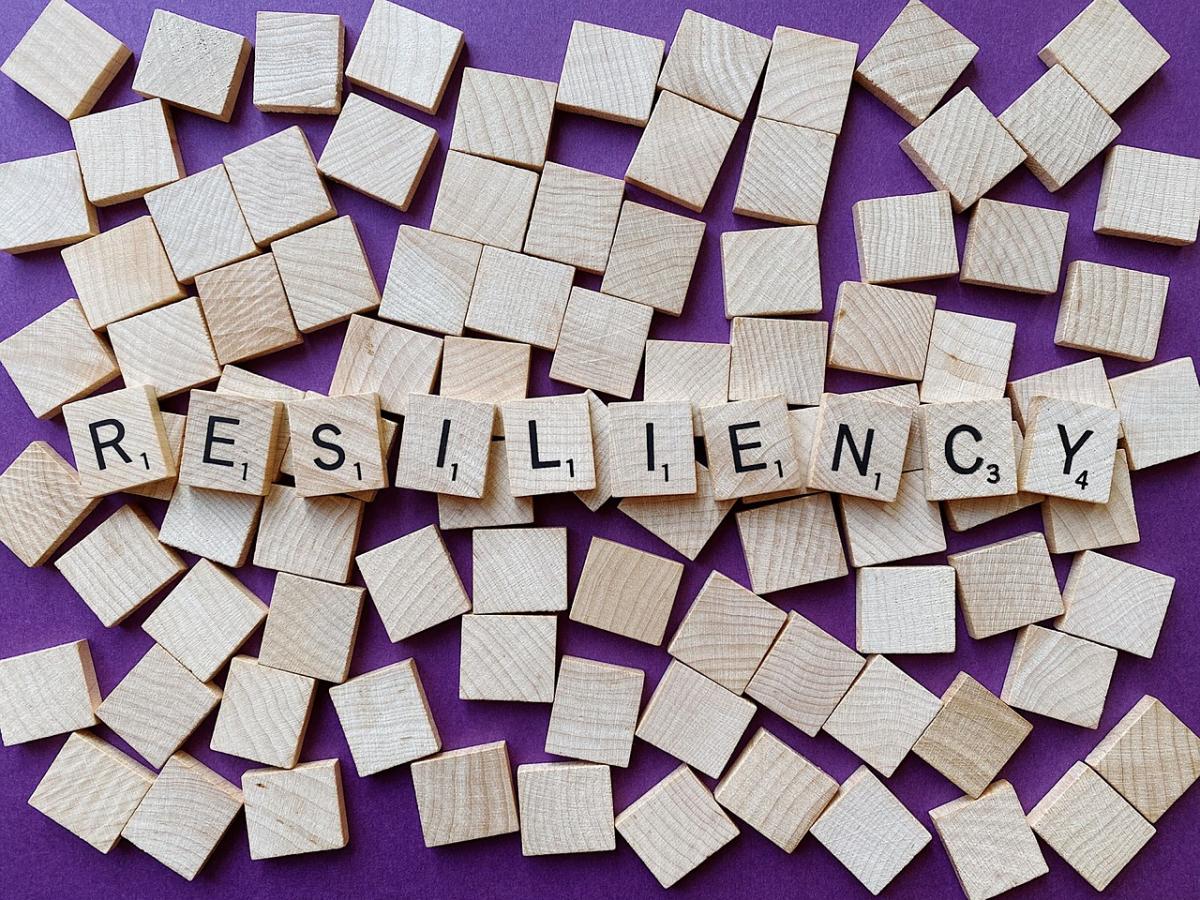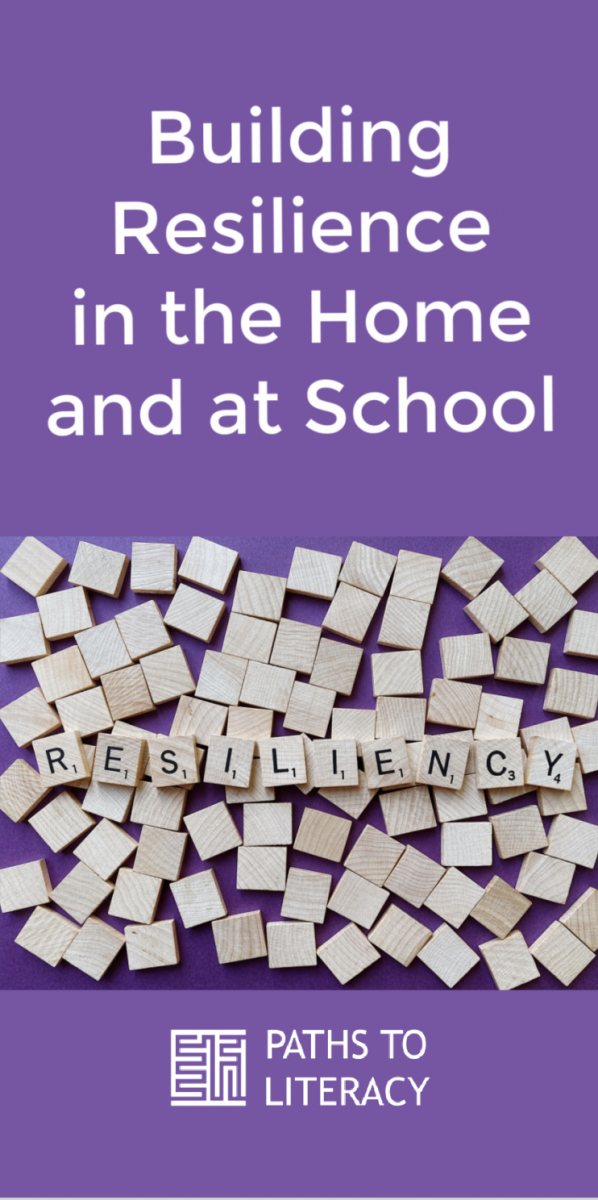Building Resilience in the Home and at School

Tim tries to read a story aloud for his class. He has difficulty with this activity and asks the teacher for help. Once she gives the help, he continues to read. Sara stumbles while reading the same book to classmates. Even after the teacher provides help, Sara refuses to read aloud despite multiple attempts at encouragement. At home, Becky is eager to learn how to cook a meal with supervision. Danny refuses to cook because he fears that he will get burned. Even with reassurance of the supervision available to ensure his safety, Danny refuses to attempt to cook because of his fears.
Each of these children is demonstrating a different degree of resilience. Resilience is the ability of an individual to continue to pursue goals in the face of either real or perceived possibilities of failure. It is our ability to keep trying when the situation becomes difficult. It also allows us to learn from our mistakes and to attempt tasks even after multiple failures. Clearly it is a critical skill for all of us to achieve as we grow and develop both as children and as adults.
Varying Degrees of Resilience
Parents and teachers have long recognized that children have varying degrees of resilience. Some children will continue to try to achieve difficult goals despite multiple failures. Others will stop after a single failure. Research doesn’t tell us exactly how this skill develops. We do know many life experiences contribute to resilience. We also know that resilient children tend to do better in school and that they grow up to be more independent, confident, and capable adults.
Every parent knows that each child is born with different abilities to deal with stress and failure. This is demonstrated multiple times as children learn even the simple skills of life such as walking, meeting strangers, etc. However, we also know that children can learn to manage stress and failure more effectively as they deal with the demands of their environment supported by the responses of nurturing adults including parents, family members, support staff, and teachers.
The Impact of the Pandemic on Resilience
The past 15 months have been a time of great stress, and a constant test of the resilience of all. Both children and adults have experienced considerable uncertainty, frequently changing information, and constantly shifting environments. For many this stress has resulted in more confidence in the ability to meet challenges and increased resilience. For others this has resulted in considerable anxiety and significantly less resilience in meeting challenges. The upcoming year will be a time that all need to focus on decreasing stress and convincing less resilient children of their capabilities in meeting challenges. This will be evident in both the home and school environments.
Challenges for Children with Visual Impairments
In addition to these types of general challenges to society, children with visual impairments (VI) often face extremely specific types of challenges that require incredible resilience. Many of them have health issues that require monitoring, often resulting in painful tests and an uncertain future. Daily activities at home and in the classroom are more challenging than for a child with vision. They struggle to experience the different aspects of their environment, complete their assigned tasks, and read social cues. For many students with VI, the world can be a stressful place with almost constant striving to meet the demands of a changing environment.

Specific Strategies to Promote the Development of Resilience
It is important that parents, teachers, and significant others facilitate development of skills and abilities that will help develop resilience in these children. Much of this comes naturally through the environment as the child attempts and succeeds at mastering difficult tasks. However, some specific strategies may also be helpful in this process. These include the following strategies which can be implemented at home and at school.
-
Maintain Nurturing Relationships
Children do best in dealing with stress when there is at least one supportive adult in their life. This adult can help the child evaluate stressful situations as well as possible responses. Both parent and teacher are likely to be the most critical adults in providing this support. However, other supportive adults such as grandparents, other relatives, and neighbors in the home can help provide this same sort of support. In school settings, other professionals such as speech therapists, O&M instructors. and school administrative staff often provide that personal support. When personal contact is not possible for some reason, remind the child often of the pride other people feel about the child’s success. Always include a reason for this pride rather than general comments. Children need to know the specific behaviors that we are praising. Remember that surrounding a child with a community of caring adults in both the home and school increases their willingness to take risks and the corresponding development of resilience.
-
Teach Problem Solving Skills
Encourage development of problem-solving skills through a variety of everyday life activities. Help children play games that require these skills. Facilitate the development of the skill determining when to ask for help in different situations. Use specific situations such as those shown on TV programs and in books to demonstrate asking for needed help. If possible, guide the child toward an ultimate solution through a strategy of solving sequential problems. Avoid simply providing the solution whenever possible. Verbally describe your own steps in solving a problem in a real-life situation. Try to occasionally take a “wrong step” in life situations and demonstrate the ability to reassess a situation. Encourage the child to see his or her own difficulties as a part of learning to problem-solve rather than as a failure.
-
Teach Optimism in Everyday Life
Resilient people are almost always optimistic...another great life skill for us all! As parents and teachers, demonstrate optimism in your own life. Try to reframe frustrating situations in a more positive light. For example, if rain cancels your plans for a day at the park, remind child of the fun that you can have baking cookies together. If computers are periodically unfriendly, remind the class of how lucky we are to have them available in the classroom. Encourage the child to do this as well in as many situations as possible. In reframing a negative situation we focus on what we have rather than what we have lost.
-
Encourage Safe Risks
When confronted by a potentially frightening task, remind the child of your confidence in their ability to complete parts of the task. Without that support, children are likely to see these tasks in extreme positions. Children most often feel that they must either approach the whole task or avoid it entirely. Help them see that they can take “baby steps” toward accomplishing this task. Remind them constantly that they are getting stronger each time they face their fears even on the smallest level. Avoid making statements that they can do it all the next time! It is much better to remind a child that they can do a little more of the task each time that they attempt to do it!
-
Provide Help when Needed
Let them know you trust their ability to cope but are always available for help when needed. Parents and teachers will always need to provide extra help to children on some occasions. Just be certain that this is happening occasionally rather than as a regular occurrence. When it does occur, let them know you are certain that they can cope with parts of it in the future. Be certain that you don’t show frustration or disappointment when you do have to provide this extra assistance.
-
Continue to Provide Child with your Unconditional Love and Acceptance
Regardless of the changes that do or do not occur, continue to maintain a loving and supportive attitude toward the child. Your support has already provided an important base for the child. Positive improvements will continue with this love and acceptance.
With the continued effort of both parents and teachers, students with VI will develop skills in meeting and overcoming obstacles as well as maintaining a positive approach to life. This will lead to a life of competency, independence, and acceptance for the child with visual impairment.

